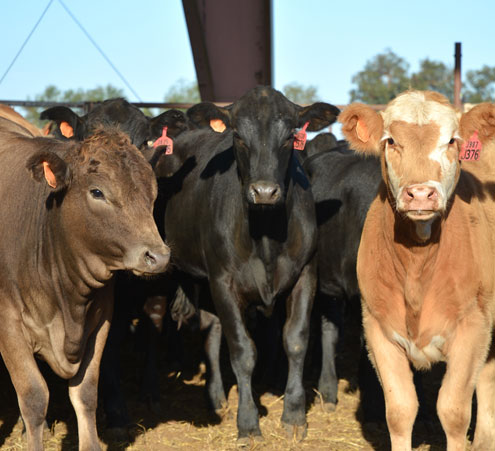COLLEGE STATION – Continued good export and domestic demands for beef has 2018 off to a good start for producers, according to a Texas A&M AgriLife Extension Service expert.
Dr. David Anderson, AgriLife Extension economist, College Station, said he expects 2018 to be a record production year for beef amid a market that continues to be strong due to good demand.
“We’ve continued to see the good demand for beef that we saw throughout 2017,” he said. “We’re expected to have an all-time record beef production year, and typically as the market expands supplies there will be a price drop, but beef demand is strong for both exports and across the U.S.”
Anderson said fast-food giant McDonald’s commitment to provide fresh ground beef for its quarter-pound hamburgers is one example of factors that could impact ground beef demand and therefore prices.
“The decision by the biggest fast-food chain in the country may likely boost cull-cow prices and fresh beef trimmings demand,” he said. “Fed cattle are in the high $120s per hundredweight and above the average compared to a year ago.”
Calf prices have also been above last year’s average so far due to demand by feedlots, Anderson said.

Dry weather has been a contributor to feedlot placements this year, Anderson said.
“Dry conditions in wheat country have caused many producers to sell calves to feedlots that would have otherwise packed on weight in pastures,” he said. “This could mean fewer heavy feeder cattle will be available after typical gains in March, April and May.”
Spring is historically a good season for beef sales, Anderson said. People are cooking out and grilling, so “middle meats” such as ribeyes and strips are increasingly in demand.
“It’s only mid-March and consumers in the northeast, which includes major U.S. population centers and markets, have been hit by multiple winter storms over the past few weeks,” he said.
“That may have slowed retail sales, but they’re temporary delays. It’s early for retailers and they’ve been planning what they will feature and when for months.”
Exports have helped offset winter-weather setbacks, he said.
A weak dollar strengthened the U.S. export market by creating opportunities for high quality U.S. beef purchases by foreign countries, Anderson said.
The overall market could be headed toward lower prices later in the year due to high beef production, Anderson said.